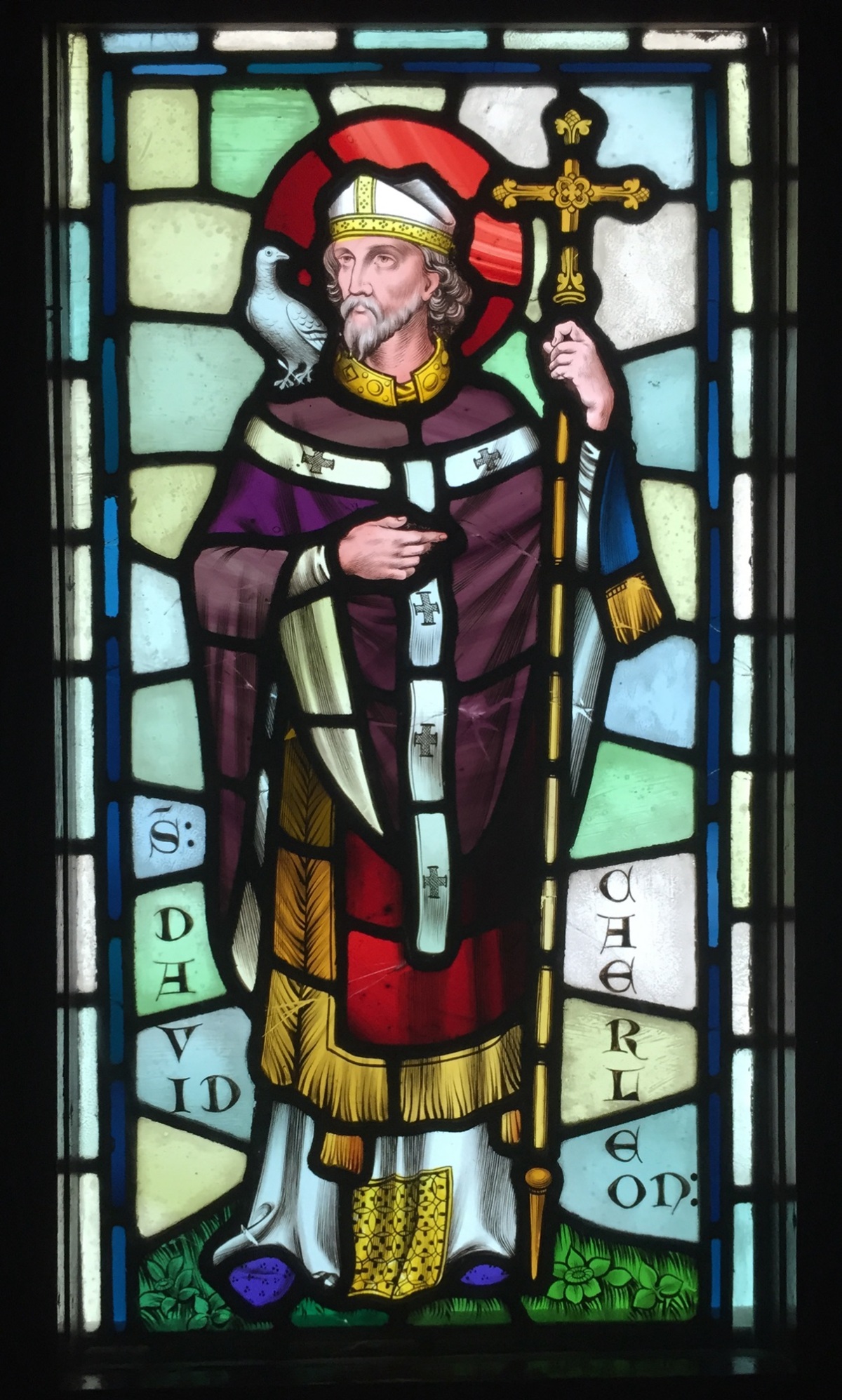As it is St David’s Day today, we are honouring our Welsh heritage, as we remember our various Welsh ancestors:
John’s paternal grandfather, John Squires and his parents (Gilbert Squires and Charlotte Jones) from Monmouthshire;
Elizabeth’s paternal great-great-grandfather, John Griffith and his parents (George Griffiths and Mary Humphries) from Breconshire;
Elizabeth’s paternal great-great-grandmother, Winifred Harris and her parents (David Harris and Miriam Jenkins) from Monmouthshire;
John’s maternal great-great-great-grandfather, William Hoskin, from Pembrokeshire;
and way, way back on Elizabeth’s maternal Lowe line, which reaches back into the aristocracy and eventually back to the royal families of old, there are Welsh ancestors galore from the medieval period!

Today (1 March) is the day in the Christian calendar that is set side to remember Saint David. This Welsh Saint shares his name with the most well-known King of Israel—David, son of Jesse, father of Solomon, ancestor of Jesus, whose reign is said to have lasted for forty years (1010 to 970 BCE), although the biblical term of “forty years” signals something like “a long, long time”, rather than being a precise chronological measurement.
And although the books of 1–2 Kings and 1 Chronicles purport to describe his reign, the actual historical reality of David is buried in the mists of time. Indeed, there is some debate amongst biblical scholars as to whether he did actually exist, or whether he was a literary figure created centuries later to symbolise the alleged might of Israel at an earlier time.
But today is a day devoted to his namesake, Dewi, Bishop of Mynyw. It is said that the birth of Dewi was foretold by an angel thirty years before it took place, both to his father, Sant, a man of the royal house, and to Patrick in Ireland.
Dewi’s mother, Non, also of noble birth, was a great beauty. When Sant saw her on his travels, was enflamed with passion for her and forced her to lie with him. The local ruler threatened to kill the child at birth, but when that day came a violent storm arose, and Non fled for shelter to a chapel by a holy well. The lightning flooded the area with brilliant light, protecting both Non and her baby.
The hagiography about Dewi, developed in the centuries after his life to extol him as a saint, makes the claim that he became a renowned preacher, founding monastic settlements and churches in Wales, Brittany and southwest England (including, possibly, the abbey at Glastonbury). It is said that he made a pilgrimage to Jerusalem, from which he brought back a stone that now sits in an altar at St David’s Cathedral, built on the site of his original monastery.
Such stories come from a book written by Rhygyfarch, an 11th century Bishop in the city of St Davids in Pembrokeshire, who claimed that his work was based on documents found in the cathedral archives. By this time, hagiographies of various saintly figures had been written for some centuries; standard elements included comparing the life of the saint with the life of Jesus, and providing a detailed account of the martyrdom of the saint if they died as a martyr.
The purpose of hagiographical writing was not to preserve “actual history” (not that such a thing is actually possible to access). It is thought that hagiographies provided priests and theologians with models to follow as they preached and wrote. They have a similar function to classical handbooks, as they provide the rhetorical tools necessary to present Christian faith through the example of the saints’ lives.
So “what actually happened to Dewi” is not the point at hand; rather, “how Dewi models faithful discipleship” is the reason for remembering him, telling stories of his life, providing an example for medieval Christians.

The religious symbol associated with Dewi is a white dove. The story that explains this is that whilst Dewi was preaching at the Synod of Brefi, a mound arose from the ground to form a small hill, and a white dove settled on his shoulder. The sermon, apparently, was a criticism of Pelagianism, a belief that the fall did not introduce original sin, and that human beings can work to achieve perfection in God’s sight.
Dewi was ascetic and vegetarian; he believed that “hard manual labor was the duty of all, thus preferring not to use cattle to help them plow the fields” and imposed on his community “a diet of bread and vegetables, with just a sprinkling of salt, so as not to inflict unnecessary suffering upon any creature by taking its life for food.” (Holly Roberts, Vegetarian Christian Saints, Anjeli Press, 2004, p. 131.)
It is said that he taught the monks of his community how to grow leeks—a vegetable which has become associated with Wales. It’s a tasty vegetable which adds flavour to various meals that we cook, today.
Dewi died peacefully at the end of the 6th century; it is said that the monastery was “filled with angels as Christ received his soul”. His remains were initially placed in the cathedral, but later conflicts meant that they were disrupted and moved. Dewi was canonised as Saint David in 1120 and declared to be the National Saint of Wales. Over 50 churches in South Wales had been dedicated to him before the Reformation.
So today, we give thanks for David: monk, saint, national hero.
See https://www.historic-uk.com/HistoryUK/HistoryofWales/St-David-Patron-Saint-of-Wales/


